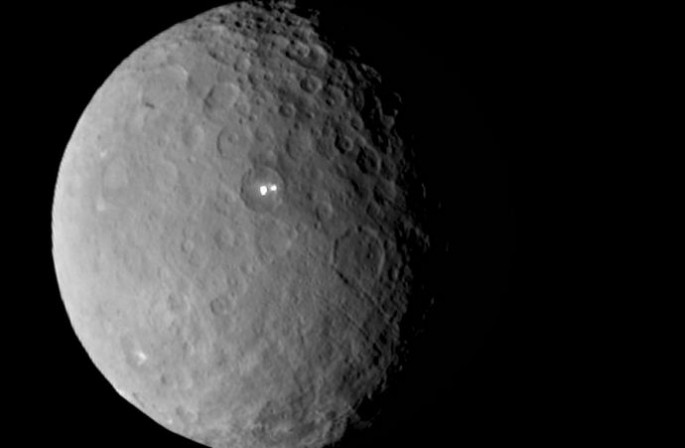History has been made. Dawn, NASA's intrepid little spacecraft, traveled over 7-1/2 years and millions of miles to make a pinpoint rendezvous with the largest non-planet in the solar system. The intercept took place March 6, 7:20 a.m. ET, in the asteroid belt.
Ceres, or 1 Ceres, its minor-planet designation, is the largest object in the asteroid belt. It consists of rock and ice, is 950 km in diameter and has some one third of the mass of the asteroid belt.
It's the only dwarf planet in the inner Solar System and is the only object in the asteroid belt known to be rounded by its own gravity. It was the first asteroid to be discovered. Giuseppe Piazzi discovered Ceres on January 1, 1801.
Dawn's mission profile calls for it to enter observational orbit around Ceres at an altitude of 5,900 kilometers. The spacecraft will reduce its orbital distance to 1,300 km after five months of study, and then down to 700 km after another five months.
Dawn's instrumentation includes a framing camera, a visual and infrared spectrometer and a gamma-ray and neutron detector.
These instruments will examine Ceres' shape and elemental composition. Last January 13, Dawn took the first images of Ceres at near-Hubble resolution, revealing impact craters and a small high-albedo spot on the surface near the same location as that observed previously.
Additional photo sessions at increasingly better resolution took place on six separate locations until March 1. Two more are planned (April 10 and April15) as Dawn maneuvers around Ceres before entering its initial observational orbit.
"We've never even sent a spacecraft there," said Marc Rayman, Dawn's chief engineer and mission director to USA Today. "This is a first reconnaissance of an entirely new world."
Among the most unexpected discoveries on Ceres are the two very bright spots in a crater. Photographed by Dawn's camera Feb. 19, the dots have the experts alive with speculation.
The spots "are unique in the solar system," said Carol Raymond, deputy principal investigator of the Dawn mission.
"The mystery will be solved, but it's really got us at the edge of our seats."
Scientists know Ceres once had an icy ocean at its core and might still have it. Dawn will look for this liquid ocean.
Should there be an icy ocean on Ceres that "raises the question, if water equals life, could life have evolved under the surface of Ceres?" asked Dawn science team member Mark Sykes, director of the Planetary Science Institute in Tucson.
http://www.usatoday.com/story/news/2015/03/06/ceres-dawn-spacecraft-nasa/24485279/




























